ARACENA
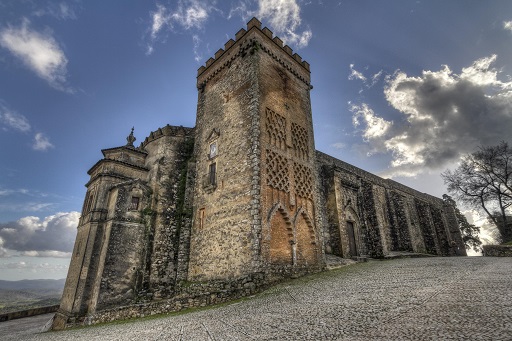
Aracena Castle
Fortified town from medieval times. In this space archaeological remains have been found that show an Andalusian population. Inside the Castle of Aracena we can see the houses and the different dependencies of the fortress. You enter through the postern or secondary door of the Alcázar, in the highest and eastern part of the hill, that makes up the fortified area of Aracena next to the parade ground. Archeology indicates two times of occupation during the Al-Andalus period: from the 10th to the 11th century during the times of the Caliphate of Córdoba and the Taifa Kingdom of Seville; and from the twelfth century to the middle of the thirteenth century, when Al-Andalus was part of the Almoravid and Almohad empires.
Direction: Cerro del Castillo s / n
Schedule: Monday to Sunday from 11:45 a 17:45 h
Phone: 663 93 78 77
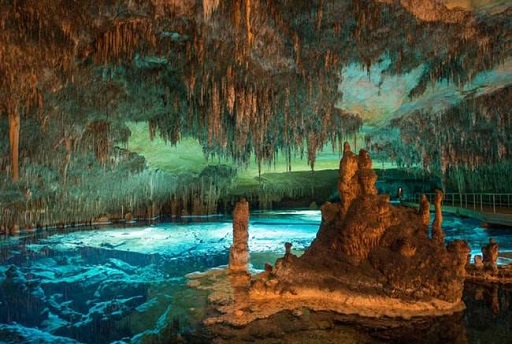
Grotto of Wonders
The Gruta de las Maravillas is located in Aracena, and consists of a spring of inexhaustible beauty, forged by time on nature, and only with the help of elements such as water and stone. Exceptional galleries coexist in it, salons, lakes and underground courses, that over time the water has carved in the Cerro del Castillo. It is considered one of the most beautiful and best preserved caves in the world.
In it you can make several types of routes, consultation HERE schedules and prices.
Direction: Pozo de la Nieve street s / n
Phone: 663 93 78 76
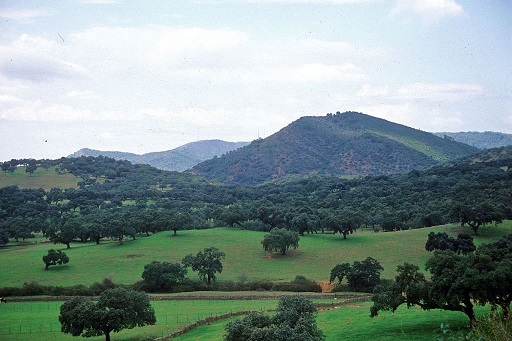
Sierra de Aracena and Picos de Aroche Natural Park
It is located at the western end of Sierra Morena, north of Huelva, and is characterized by the extensive forest mass that it has, high rainfall, mild climate, and a spectacular cultural and natural heritage. The wide meadows of this environment, have favored the breeding of the Iberian pig, around which an industry has arisen that sustains the economy of towns in the area, like Cumbres Mayores or Jabugo. The landscape changes depending on the altitude and humidity. The meadows populated with holm oaks are replaced by cork oaks in some areas, while in the higher altitudes, oak forests are frequent., as in the place of the Solana de los Bonales; However, in towns like Fuenteheridos, Galaroza or Castaño del Robledo the landscape is made up of chestnut trees; and in river beds such as the Múrtigas through galleries forests where large trees such as poplars abound, fresnos, willows and alders, along with brambles and climbing plants.
Direction: Sierra de Aracena and Picos de Aroche Natural Park
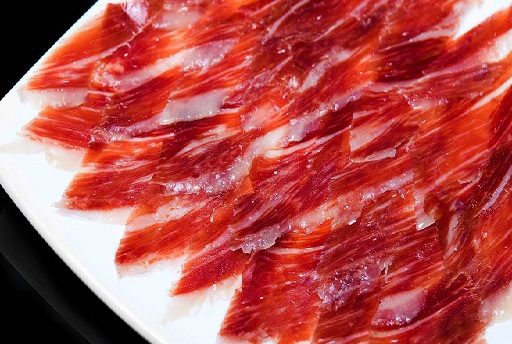
Ham Museum
Located in the Sierra de Aracena and Picos de Aroche Natural Park, The Museum of Ham is considered an Interpretation Center of the Iberian Pig, important industry in the area, with the aim of providing information and disseminating a millenary and mountain culture in a didactic and fun way. It consists of seven rooms, where the visitor will discover the true protagonist: the pig. Your parenting process, his life in the pasture, or your diet, among other things. What's more, The Ham Museum has a Mycological Information Point, where visitors can obtain educational knowledge about the world of mushrooms, and with an area dedicated to Sierra Morena.
Direction: Gran Vía street s / n
Consult timetables and prices HERE
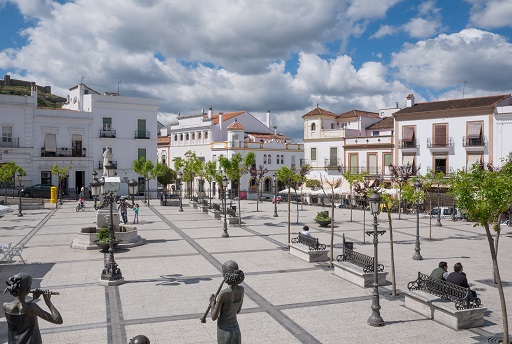
Marqués de Aracena Square
As the population of Aracena increases, the town begins to extend towards the “low neighborhood” from the hillside of the Castle, which was originally a fountain and an annex pillar, who supplied water to neighbors and their livestock, until in 1876 A tree-lined square is built and presided over by a four-pipe fountain crowned by a sculpture of S. Julian.
Direction: Marqués de Aracena Square
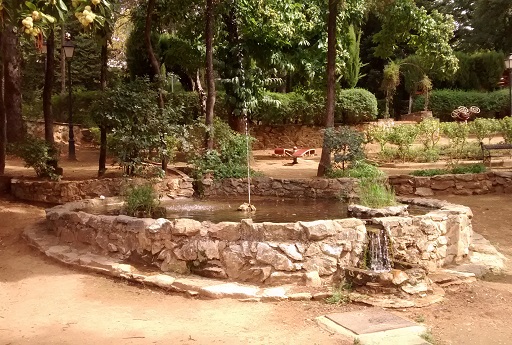
Arias Montano Park
Arias Montano Park, It is located on Avenida de Andalucía, and it is a large garden that welcomes the shape of an irregular six-sided polygon, comprising a surface of 7910 square meter. East, It owes its name to the distinguished humanist Benito Arias Montano, founder of the Cátedra de la Latinidad de Aracena in 1597, its construction began in the middle of the Civil War, in the year 1937, at the initiative of the then mayor José Moreu. A place to walk, relax and enjoy, its interior is home to a large number of trees, shrubs and ornamental plants from around the world. Chestnut, white firs, cypress trees, laureles, palmeras, stone pines, pinsapos, madroños, jasmine trees or oleanders are many of the species that we can find.
Direction: Of. of Andalusia, 20
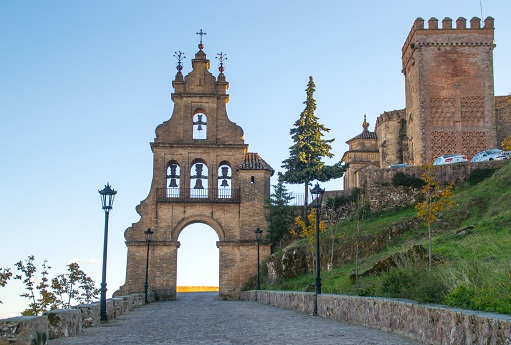
Castle Church
Also known as Priory Church of Our Lady of Greater Pain, It is the oldest and most emblematic temple in the town of Aracena. It was built between the 13th and 15th centuries within the urban fence, next to the castle. It is a Gothic-Mudejar style building where the exterior tower stands out, Mudejar style, decorated with sebka cloths. The church has three naves of equal height, covered with ribbed vaults, choir and atrium. Inside it houses the image of the Virgin of Greater Pain, Patron of Aracena. Outside, the Puerta Real stands out, with its atrium, and that of the Mercedes, decorated with elements typical of flamboyant gothic. Likewise, it is necessary to point out the altarpieces, images and paintings that it welcomes inside, dated between the 16th to the 20th centuries.
Direction: Plaza Virgen del Mayor Dolor, S/N
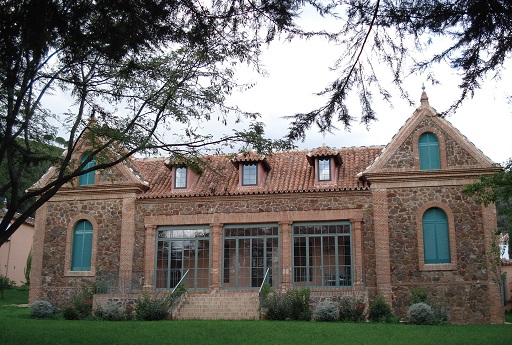

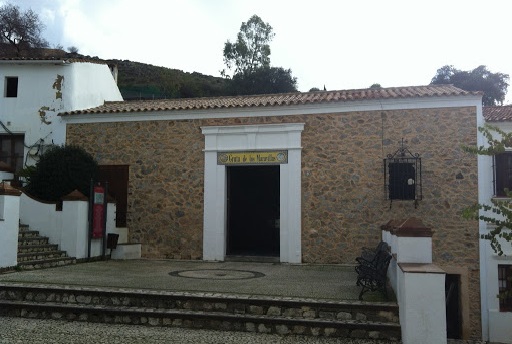
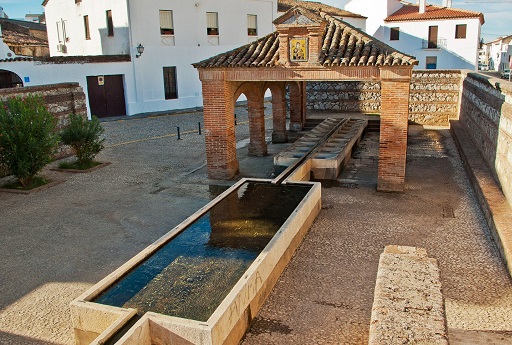
Aníbal González route
Aníbal González was one of the exponents of Sevillian regionalist architecture. From his mind the project of the popular Plaza de España in Seville was born. Fortunately for the Sierra de Huelva, spent long vacation periods in this region, mainly in Aracena, where he left his particular stamp on numerous buildings.
- Aracenilla neighborhood
This project begins its construction in 1923 being promoter of the works the Hon. Sr. D. Francisco Javier Sánchez-Dalp Calonge, Marquis of Aracena. The project to be carried out consisted of several chalets to rent to the traveler, it was carried out in different phases, and its completion was recorded in 1926.
Direction: Aracenilla urbanization
- Current Aracena Town Hall
In 1911 the Sánchez-Dalp brothers donated it to the Municipality of Aracena, This fact is recorded in a marble plate that still exists next to the main entrance of the building.It is a free-standing building with a triangular plan, that in elevation unfolds in three main floors, a basement level and an attic. Its direct contemplation places us before a construction of Mudejar appearance, discordant with the neo-Mudejar works erected to date in Seville by the same author. It uses stone and brick for its construction.
Direction: Marquesa de Aracena Square, s/n
- Casino "Arias Montano"
This work was commissioned to the Architect by the Society "Arias Montano". A weighted geometric conception presides over the whole with a purifying style. The precise symmetrical composition with the central axis in the corner stands out from the façade, the rich play of horizontals and verticals that mark the lines of force with a grid rhythm, the stylized garland design that molds the iron of railings and streetlights, the checkered closure of iron and glass or wood and glass of the openings, the outstanding finish of the pilasters, the cross and cross parapets or the generalized decorative containment.
Direction: Marqués de Aracena Square, s/n
- Anteroom of the Grotto of Wonders
This work was financed by D. Francisco Javier Sánchez-Dalp Calonge and the then Mayor of Aracena D. Juan del Cid López. It included the refurbishment of the recently discovered Grotto, between these tasks, to design the entrance building, commission granted to Aníbal González in 1922 and that culminates in 1923. The work is integrated by three rooms: a reception room in the center, flanked by the Concierge's house on one side and the staircase that descends to the Grotto on the other.
Direction: Snow Well Street, s/n
- Public laundry “Council Fountain”
It is a civil work of great importance within the domestic life of Aracena. It was inaugurated on 16 February 1927 and financed by Javier Sánchez –Dalp (as it says on the ceramic plate on one of the walls) This laundry took advantage of an existing spring to supply the trough and the built basins.
Direction: Snow Well Street, 55
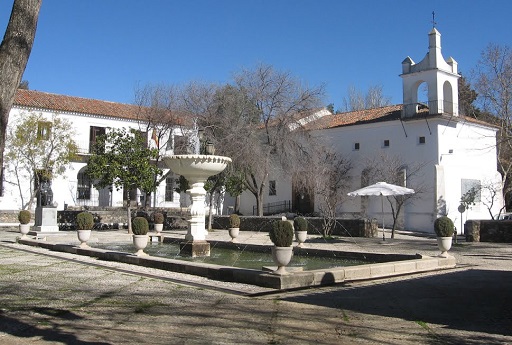
Doña Elvira Square
It is one of the most recent squares in Aracena (1972). It was ordered to be built by D. Florentino Pérez-Embid, in honor of all the mothers of Aracena. The facades of the surrounding buildings (Ham Museum, Tax office, Assembly Hall and San Blas High School Institute) they form a harmonious and pleasant whole. In the center of the square there is a huge pond with a large fountain-fountain in the center.
Direction: Doña Elvira Square 2
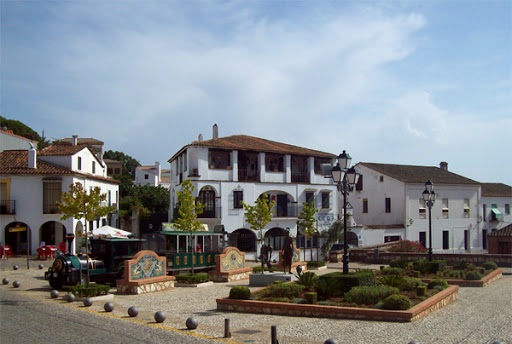
Square of the Grottoes of Wonders (St. Peter's Square)
San Pedro Square is populated with palm trees, orange trees and sculptures, most of them by authors of recognized prestige that make up, along with others that are scattered around the environment, the Museum of Contemporary Art in the Open Air "Andalusia". This place was the settlement of the powerful Jewish and Moorish colony that, during the Middle Ages it was settled in Aracena. Their occupation was the leather tannery and for this they used the spring that today is urbanized in the public laundries of the Fuente del Concejo, which was originally a source of Arabic typology. It has a small pond that communicates with a fountain by means of a pipe.. On a higher level, crowned by its bulrush, stands the Hermitage of San Pedro, built in the 15th century.
Direction: St. Peter's Square
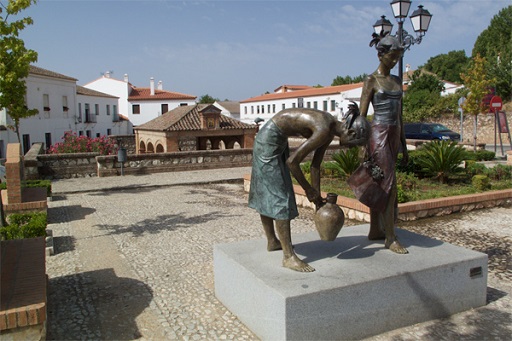
Museum of Contemporary Art in the open air
This idea was born from Pepe Noja himself, which was commissioned by the Aracene City Council to decorate this historic square. The author proposed the placement not only of a work, but the creation of any Museum of Contemporary Art in the Open Air in Aracena, in which numerous pieces were at street level. A) Yes, Aracena has become a museum that can be visited by everyone who visits it. This idea was so well received that, since 1986, there have been several extensions to this museum, that has spread through the streets of Pozo de la Nieve, San Pedro street, Gran Vía or Plaza de Santa Lucía, among other.
Direction: San José Street, 21200 Aracena
ARACENA ENVIRONMENT
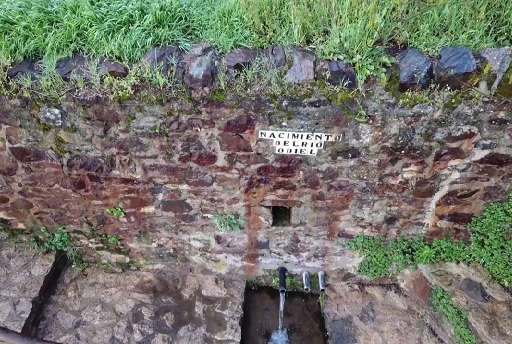
Rest of Marimateos (source of the river Odiel)
The Marimateos recreational area has picnic areas, children's play areas, and it is located in the municipal term of Aracena, occupying part of the extension of the so-called Marimateos Rest, located in the section between Fuenteheridos and Aracena. The area is framed in a unique environment in which the presence of the Arroyo de Marimateos grants a highly appreciated natural value, especially in the driest periods of the year. It is in this enclave where the source of the Odiel River has been dated.
Direction: 21200 Aracena
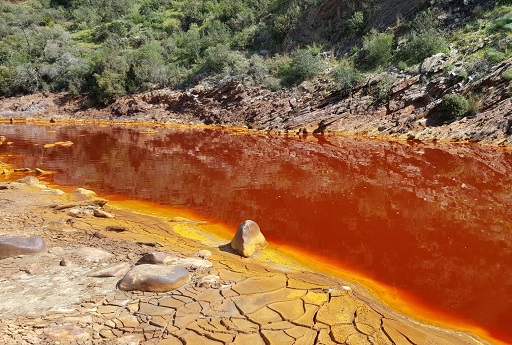
Riotinto
The Riotinto Mining Park offers its visitors a mixture of history, adventure, nature and emotions, with a journey through the 19th century, going through incredible landscapes, a unique river for its color and the composition of its waters, a territory that shows traces of 5.000 years of mining history, an old mine recovered for the enjoyment of children, a folded museum of cultural heritage, a house that takes us back to the Victorian era, among others.
Direction: Riotinto Mining Park
For more information and tickets HERE
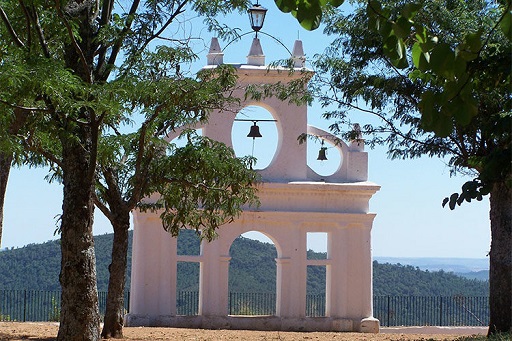
Alájar and the rock of Arias Montano
The Peña de Arias Montano is located a few kilometers from Alájar, whose neighbors coexist with this rock formation that serves as Balcón de la Sierra. The constant work of the water piercing the rock, as well as the salts dissolved in the liquid crystalline, have given rise to this space, in which several caves and rock formations coexist, as well as different spaces of interest, like the hermitage of the Queen of Angels, the bell tower or the Center for the Interpretation of Humanism, that reels the life of Benito Arias Montano.
Direction: The Rock of Arias Montano

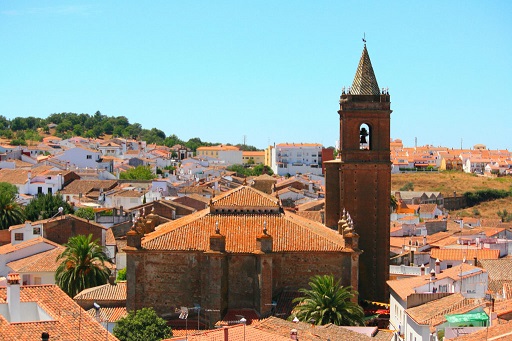
Cortegana
This municipality is located in the center of the Sierra de Huelva, and belongs to the Sierra de Aracena and Picos de Aroche Natural Park, that occupies the entire north of the province with its meadows and small covered elevations, predominantly, of holm oak forests, alcornoques, chestnut trees and scrubland, where numerous streams flow, forming a landscape of extraordinary beauty and attractiveness. Its urban area, of great beauty as a whole, gathers all the characteristics of the popular architecture of the area.
Direction: How to get
We recommend a list with the main tourist attractions that can be visited in Cortegana:
- Casa Estrada – Direction
- Mudejar houses
- Castillo Sancho IV El Bravo – Direction
- Hermitage of Our Lady of Mercy
- Hermitage of San Sebastián
- Monumental Fountain
- Chanza Fountain
- Fuentes del Santo and de la Caja
- Grand Casino and New Casino
- Parish Church of the Divine Savior (S. XIV)
- Bullring
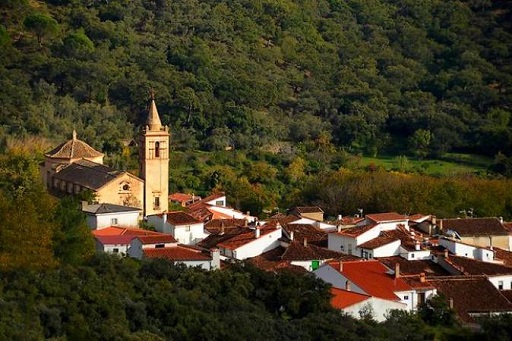
Linares de la Sierra
It is located in the eastern part of the Sierra de Huelva region, in a deep valley about 497 meters high above sea level. From town, It is worth highlighting its cobbled streets, the public laundry and its crowded houses.
Direction: How to get
We recommend a list with the main tourist attractions that can be visited in Linares de la Sierra:
- San Juan Bautista Parish Church
- Bullring
- "Plains" or "Pictures", many Linarians at the entrances of their houses have spectacular artisanal and artistic paving stones, with colorful decorative shapes.
- New Fountain
- Old Fountain

Almonaster la Real
In the Sierra de Huelva, on the limits of the Sierra de Aracena and Picos de Aroche Natural Park, Almonaster is found, a small town turned into a must-see for anyone who wants to discover a unique heritage space and a landscape rich in vegetation, full of splendor and color.It has a popular architecture of great interest that makes it well deserving of the Historic-Artistic Site cataloging since 1982.
Direction: How to get
We recommend a list with the main tourist attractions that can be visited in Almonaster la Real:
- Almonaster la Real Mosque
- Bridge of the Three Fountains
- Church of San Martín
- Hill of San Cristóbal
- The Apple tree
- Manuel Vázquez Vargas Museum
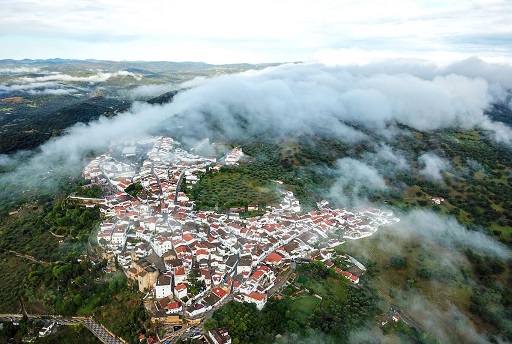
Zufre
Zufre has a great natural wealth, because within its municipal terms is part of the Sierra de Aracena and Picos de Aroche Natural Park. The history of this town is marked by clear Islamic roots, reflected is an architecture and a characteristic urban layout, of narrow streets and remains of an Almohad fortress.
Direction: How to get
We recommend a list with the main tourist attractions that can be visited in Zufre:
- Zufre Council
- Church of the Immaculate Conception
- Hermitage of Puerto
- Flour Tower
- Cut from Zufre
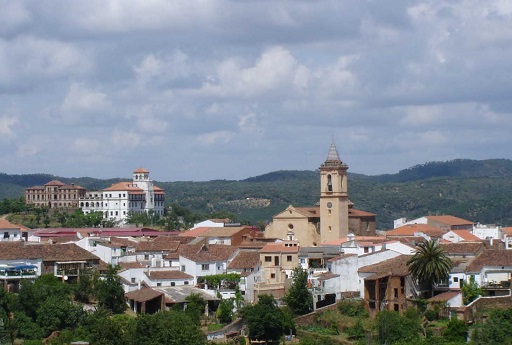
Jabugo
Jabugo is an Andalusian municipality in the province of Huelva located within the Sierra de Aracena and Picos de Aroche Natural Park, in Sierra Nevada. In Jabugo you can enjoy the nature of the Natural Park on several hiking trails or enjoy the star gastronomy of this town, derivatives of the Iberian pig such as the well-known Jamón de Jabugo from the Denomination of Origin Jamón de Huelva.
Direction: How to get
We recommend a list with the main tourist attractions that can be visited in Jabugo:
- Cave of the Mora
- Parish Church San Miguel de Arcángel
- The Pigeon Shot
- The calf
- Zaho Fountain
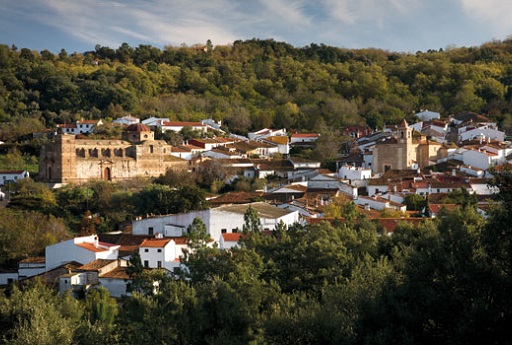
Robledo chestnut
The urban nucleus of the town is considered an Asset of Cultural Interest, formed by an impressive hamlet of great size raised from the Renaissance, It also has a good number of public fountains and an abandoned bullring from the 19th century.. It is the highest altitude town in the province, and has one of the highest levels in the Sierra, a perfect destination for hiking and mountaineering, or just to enjoy the breathtaking views.
Direction: How to get
- Church of Santiago el Mayor
- Alamo Square
- Fountain of the Neighborhood
- Chorro Fountain
- New church

Fuenteheridos
The urban area of Fuenteheridos has been declared a Historic-Artistic Site for its high architectural value, and the town is home to an important aquifer of carbonate rocks., limestones and dolomites, with underground flows that offer their waters in various sources and natural springs.
Direction: How to get
- Plaza el Coso
- Fountain of the Twelve Pipes
- Walk of the Poets
- Mirador Era de la Carrera
- Humilladero de La Verónica
- Church of the Holy Spirit
- Irrigation Shifts Fountain
- Source of the Múrtiga river
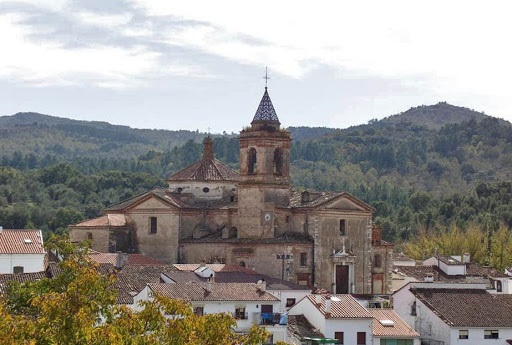
Galaroza
It is an Andalusian town located within the Sierra de Aracena y Picos de Aroche Natural Park, famous for its water and wood crafts. Galaroza, of Islamic origins, preserves the typical architecture of the villages of the Sierra de Huelva, and was declared a Historic-Artistic Heritage. The climate and orography of the Sierra make this an area a perfect place for hiking., hiking, mountain-bike, horseback riding, fishing and climbing.
Direction: How to get
- Our Lady of Carmen Church
- Carmen Fountain
- Hermitage of Santa Brígida and San Ginés
- Church of the Immaculate Conception
- Navahermosa ravine
- You were communal
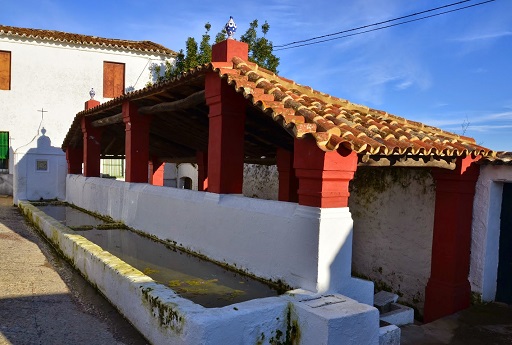
Route of fountains and laundries
- Fountain of the Twelve Caños de Fuenteheridos
- Upper and Middle Laundry, in Higuera de la Sierra
-
Laundries of the New Fountain and Old Fountain, in Linares de la Sierra
Public Laundries in Los Marines
Source of the Birth of the Chanza River, in Cortegana